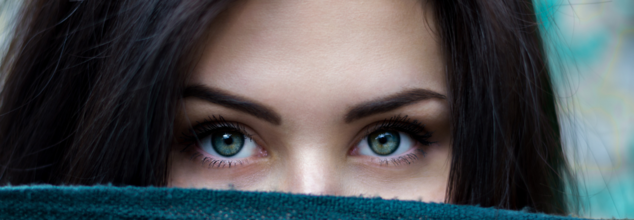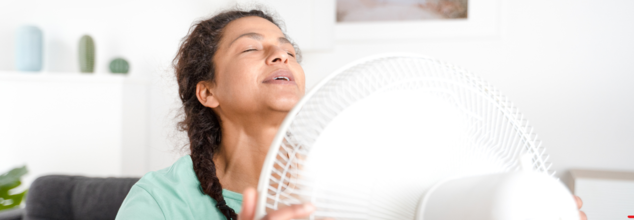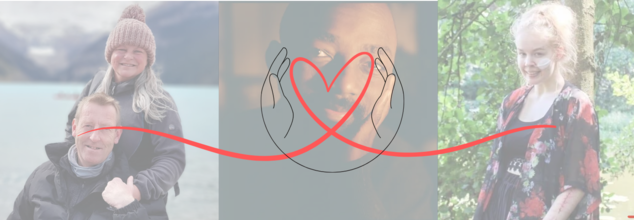- Health Conditions A-Z
- Health & Wellness
- Nutrition
- Fitness
- Health News
- Ayurveda
- Videos
- Medicine A-Z
- Parenting
- Web Stories
Your Eyes Can Reveal Whether You Have A Healthy Heart Or Not!

(Credit-Canva)
We have all heard the phrase ‘your eyes are the window to your soul’, while souls may be a stretch, your eyes can reveal a lot about your health, especially your heart health. The primary function of our eyes is to see, so people often wonder why they must go through eye checkups for their heart health.
According to UChicago Medicine, when our blood vessels aren't working right, it can show up in our eyes, especially in the retina. The retina is like a screen inside our eye that shows how our blood is moving. If there's a problem, our eye doctor can see changes that we can't see ourselves. This means that an eye checkup can sometimes find heart problems before they get serious, because our eyes give clues about our overall health.
During an eye exam, doctors look at both the outside and inside of your eyes. They use a special tool to check things like your pupils, the lens, the retina, and the optic nerve. By doing this, they can spot signs of various health issues.
What All Can An Eye Exam Tell?
During the eye exam, your doctor will use tools like ophthalmoscope to take a better look at things like your pupil reflex, lens of your eyes, the optic nerve and the retina. Here are some conditions your eyes can reveal,
Hypertension
High blood pressure can damage the blood vessels in your eyes, leading to problems like bleeding, blurry vision, and even vision loss. Ophthalmologists can see signs of high blood pressure in your eyes, sometimes even before you know you have it. They look at the size of your eye's blood vessels; if they're not the right size, it can be a warning sign. Often, people don't know they have high blood pressure until their eye doctor finds these signs.
Diabetes
Eye exams can also reveal blocked arteries. If doctors see small clumps in your eye's blood vessels, it could mean there's a problem with the arteries that carry blood to your head or heart. Diabetes is another condition that can be spotted through eye exams. High blood sugar can damage the small blood vessels in your eyes, leading to vision problems. Catching diabetes early through an eye exam can help prevent serious complications.
Other Health Issues
Eye exams can also uncover other health problems like arthritis. Inflammatory diseases can cause eye inflammation, leading to pain, redness, and vision loss. Even dry eyes can sometimes be linked to these conditions.
Can Eye Diseases Mean Heart Troubles?
If your Ophthalmologist notices marks left by the dead cells in your eyes known as RIPLs, which are Retinal Ischemic Perivascular Lesions. According to Journal of American Heart Association these are tiny marks on the back of the eye, caused by a lack of blood, can tell us if someone might have heart problems due to poor blood flow.
Sometimes, these marks mean you had an eye stroke, which happens when blood flow to your eye is blocked. If you have many marks, it might mean you have heart problems like high blood pressure or high cholesterol. However, not all marks mean you had an eye stroke. This is why one must make sure to get regular eye check-ups.
What Is The Hottest Temperature A Human Body Can Handle?

Credits: Canva
As temperatures around the world rise because of climate change, the human body is increasingly confronting a little-understood and increasing hazard: excessive heat. From enduring heatwaves to sweltering heat waves with high humidity, what used to be a seasonal annoyance is now a worldwide health risk. But how hot is too hot for the human body? At what point does heat become deadly—and why?
In 2020, an article published in Science Advances identified a precise threshold by which the human body cannot survive: 95°F (35°C) wet-bulb temperature. Unlike regular temperature readings, wet-bulb temperature takes into consideration both heat and humidity. It is measured with a thermometer covered in a cloth soaked in water, replicating the way the human body dissipates heat—by evaporating sweat.
If the air surrounding the body is too moist, sweat does not evaporate. When this system breaks down, so does the body's control over internal temperature. The result? A speedy and potentially dangerous increase in core temperature.
In perspective, 115°F (46.1°C) air temperature with 30% humidity yields a wet-bulb temperature of approximately 87°F (30.5°C)—still survivable. However, a seemingly "cooler" 102°F (38.9°C) day with 77% humidity brings the wet-bulb temperature to the lethal 95°F (35°C) mark.
Once wet-bulb temperatures reach this tipping point, sweat can no longer evaporate fast enough to cool the body. Even if the skin is wet, the internal temperature continues to climb. At this stage, hyperthermia sets in—defined by a body temperature above 104°F (40°C)—leading to symptoms like confusion, rapid heart rate, organ failure, and even death.
Who’s Most at Risk?
Although no human can live above a wet-bulb temperature of 95°F, not all people are equally at risk in lower heat exposures.
- Older people, because of impaired thermoregulation.
- Obese or chronically ill people, such as those with cardiovascular disease.
- Those on certain medications, e.g., antipsychotics or beta-blockers.
- Workers outdoors and athletes, whose exertion increases body heat.
Even healthy individuals can succumb to lower wet-bulb temperatures if they are exerting themselves in direct sun or in poorly ventilated environments.
What Happens Inside the Body During Heat Exposure?
The human body contains approximately 60% water, and fluid balance is inextricably linked with temperature regulation. In hot temperatures, the body loses water quickly through sweat and respiration. If it is not replaced, dehydration occurs, causing blood volume to decrease. This affects anything from organ function to delivery of oxygen at the cellular level.
Meanwhile, the thermoregulatory system, which depends on blood flow to shuttle heat from internal organs out to the skin, starts to fail. If this cooling circuit fails, internal organs become overheated, cells start dying, and a chain of failure results in heat stroke or cardiovascular collapse.
How Hot Is Too Hot, Really?
Whereas wet-bulb temperature gives us one measurement, research indicates the ambient air temperature limit of human survival is probably between 104°F and 122°F (40°C–50°C). 122°F is at the limits of what the body can withstand while keeping its core temperature stable, says a 2021 Physiology Report.
A different approach to research implies that the temperature at which the body begins to sweat is 89.6°F (32°C)—the beginning of heat strain. Thus, danger doesn't begin at extreme temperatures only; it accumulates with time, particularly due to long exposure and high humidity.
The U.S. Environmental Protection Agency (EPA) has documented that heat directly caused 11,000 fatalities in the United States between 1979 and 2018, although the actual number is probably much greater because underreporting is likely to have occurred. While hurricanes or flooding may be dramatic, they kill openly, but heat waves are deadly killers that silently take victims in poor communities, older people, and those not having air conditioning.
Moreover, heat exacerbates existing conditions, increasing the possibility of strokes, heart attacks, and breathing difficulties during heat waves.
How to Survive Extreme Heat?
We may not be able to manipulate the weather, but we can manage our environment and lifestyle. Experts advise:
- Rehydrate with electrolytes, not plain water. Sweating excessively loses salt and minerals necessary for cellular processes.
- Lower internal body temperature by bathing or showering with cool water.
- Avoid sun exposure, particularly between 10 AM and 4 PM.
- Dress in light, loose clothing and have lighter, more frequent meals.
Use extra caution with electric fans during high heat; they can accelerate evaporation and boost dehydration.
In addition, the Centers for Disease Control and Prevention (CDC) recommends visiting during heatwaves susceptible populations—i.e., people who are frail or have disability and ensuring air conditioning, shades, or available cooling resources like fans or air conditioning are at their disposal.
The highest temperature that a human can tolerate is not one number—it's a function of heat, humidity, and time. Wet-bulb temperatures over 95°F are universally lethal within a few hours, but even lower temperatures can be severely dangerous under the right conditions. As climate change accelerates, our knowledge of and readiness for extreme heat must keep pace. This isn't merely a meteorological issue—it's a public health emergency in the making.
Life At Any Cost: Why We Fight To Prolong Life But Question The Idea To Ease Death?

There are certain kinds of suffering that cannot be fully described in any language. Seeing someone you love disintegrate slowly- body, mind, and soul compels you to an emotional limbo in which hope, love, and sorrow get mixed up painfully. I lived through this experience with my paternal uncle, once a towering 6’2” figure of energy and wit, suffered a debilitating brain stroke. For the next seven years, our family watched him shrink, not just physically but in every possible way. A man who once lit up rooms became bed-bound, barely conscious, and unrecognizable. His laughter, once infectious, was replaced by silent gasps and spasms. His wife, my aunt, aged a decade in two years. The entire household lived in suspended animation, haunted by guilt, torn by duty, and plagued by helplessness.
Another tragedy was of a young daughter, in her late 30s, who had given every fiber of her existence to nursing her disease-stricken father, bedridden. Despite all efforts, he fell into a long, agonizing decline. One evening, with shaking hands and crying eyes, she admitted to me, "I prayed to God to take him. I couldn't stand to watch him suffer anymore.". I despised myself for it, but I couldn't help it." That instant summed up a silent truth that went unspoken: when does the need to preserve life become the desire to permit a peaceful death?
As these stories reveal, there are moments where death is not a villain but a long-awaited release. This perspective fuels the growing global debate on euthanasia and assisted dying. Though often used interchangeably, these terms bear crucial legal and ethical distinctions.
Euthanasia is where there is a third party usually a physician actively performing actions to put an end to a patient's life to cure suffering. Where it is performed at the request of the patient, it's referred to as voluntary euthanasia.
Assisted suicide means assisting someone in ending their life, often with prescribed lethal drugs. The difference here is that the patient carries out the final action.
Assisted dying is a more general term and frequently used when policy or advocacy is involved. It could mean either of the above, though certain groups reserve it to describe assisted suicide for patients with terminal conditions.
Yet another practice of end-of-life care, palliative sedation, permits profound sedation all the way to death for those who are suffering unbearable distress. Not considered legal euthanasia, yet having its ethics dangerously close, it remains at the center of much philosophical argumentation.
In countries such as the UK, these acts are still illegal. Assisting suicide can bring a maximum of 14 years in prison, and euthanasia can be considered murder. Yet, actions such as withholding treatment from terminal or vegetative patients — often referred to as passive euthanasia — are permitted.
Stories That Stir the Debate: Dignity and Choice
The strongest arguments for or against assisted death are not in legal documents but in living testimonials.
One of the cases that stirred international headlines was that of Noa Pothoven, a 17-year-old Dutch woman who had been afflicted with extreme mental illness, including anorexia and depression. Early media accounts misrepresented her death as a case of legal euthanasia. Actually, she starved to death and dehydrated under medical supervision, and her physicians, in respect for her autonomy, did not act to stop it.
Noa had endured years of intense PTSD, depression, and anorexia, stemming from violent sexual abuse. Following several hospitalizations and efforts to manage her mental illness, she made the heartbreaking choice to withhold food and fluids—a legal option in the Netherlands.
Unlike the media accounts, her death was not due to physician-assisted euthanasia, but voluntary withdrawal of treatment. Her doctors and family respected her wish to discontinue interventions, upholding her autonomy in the face of their own grief.
This case illuminates how mental distress, as with physical pain, can propel people towards death—not on impulse, but with deliberate intent. It also reveals how misinformation can taint ethical debate.
In another dramatic case, Louise Shackleton candidly discussed taking her husband, Anthony, to Switzerland, where he opted to die at Dignitas. Anthony had advanced motor neuron disease and had lost his bodily functions over the course of years. "He didn't have choices. What he desired was nothing more than a good death," Louise told a moving interview. Upon returning to the UK, she turned herself in, knowing full well the legal consequences of assisting a suicide and yet had no regrets. “I loved him. He was my husband. I was with him until the end.”
Her story brings forward an essential question: If we can choose how we live, should we not also have the right to choose how we die?
When her husband Anthony, a renowned furniture restorer, was diagnosed with motor neuron disease, he rapidly lost the capacity to live independently. "He didn't want to be in a bed unable to move, unable to even turn his head," Louise said to Sky News. They talked about his end-of-life choices over two years.
Anthony eventually went for Dignitas in Switzerland. Louise accompanied him there, remained with him, and saw him pass away peacefully—unencumbered by the physical prison his sickness had constructed around him.
When she returned to the UK, Louise turned herself in to the authorities for helping him commit suicide—legally a crime. But she stands firm on her position. "He was my husband and I loved him. I helped him find peace."
Her case presents hard choices: When someone you love pleads for mercy, and the law intervenes—whose side are you on?
As more and more support it, assisted dying is still one of the most debated ethical challenges today. Critics have legitimate points — risk of coercion, dignity of human life, and the risk of exploitation of the vulnerable. Especially where mental illness comes into play, critics contend that wanting to die may be symptomatic, rather than a choice.
Yet, supporters point out that tight controls, psychiatric assessments, and medical screening are already the cornerstone of current legislation in legal states. It's a matter of dignity, choice, and humane relief not harm for them.
Joseph Awuah-Darko, a British-Ghanaian artist aged 28 and residing in the Netherlands, has taken an unimaginably courageous step: after years of struggling with severe bipolar disorder, he has opted to seek euthanasia. His is not a tale of hopelessness, but of profound emotional introspection, strength, and a quest for human contact amidst chronic mental suffering.
Diagnosed with bipolar disorder—a mental condition that triggers savage mood swings between manic highs and depressive lows—Joseph has spent years struggling through a mental health system that, no matter how hard he tried, never provided him with lasting relief. The emotional burden of his experience weighed so heavily on him that he made the agonizing decision to seek out medically assisted death, a legal possibility in the Netherlands under strict guidelines.
In a tearful Instagram video released in December, Joseph explained, "I'm Joseph, I am bipolar and I moved to the Netherlands to legally end my life." In brutal candor and chilling vulnerability, he explained how every morning starts with "severe pain." It took him five years of thinking before he submitted his official request to the Euthanasia Expert Centre. It can take four years to get approval, a timeline that reflects the seriousness and stringency of the process.
"I am NOT special," he penned. "Like a lot of folks in their 20s; the ongoing burnout, debt, paralysing depression, violent media cycle and the dystopian truth of AI … all bear heavily." For Joseph, these meals are not simply sustenance—they are acts of presence, community, and comfort in the late hours of his narrative.
What Doctors Think?
Curing isn't always healing. Sometimes it's just relieving pain. Sometimes, restoring dignity. Sometimes, it simply is releasing — with grace, with peace, with control. For the sick who suffer without respite — physically or emotionally — the freedom to choose a death with dignity can be as therapeutic as any miracle medicine.
Dr. Tonmoy Sharma, Psychiatrist & Neuroscientist shares, "Choosing to die is not always driven by depression or emotional crisis. In many cases, especially where assisted dying is legal, it is a deliberate and carefully considered decision. These are often made by individuals with terminal illnesses or degenerative conditions who retain full mental capacity. These people may not be clinically depressed, but they are suffering in a way that no treatment can relieve, and they want control over how and when their life ends."
Dr Tonmoy further answers the pivotal question about why some people feel so helpless from their sufferings that they no longer want to live. "This question takes on different meanings depending on whether someone is experiencing mental illness or facing irreversible physical decline."
"In cases of terminal physical illness or chronic, untreatable conditions, helplessness often stems from the loss of control over one's body and the erosion of dignity. These individuals are not seeking death because they feel worthless or unloved, they may have supportive families and full access to care. Rather, they seek assisted dying because the suffering is constant and unrelenting, and they wish to preserve autonomy over the remainder of their life," adds Dr Tonmoy.
"On the other hand, when people experiencing clinical depression feel helpless, their thoughts may be clouded by negative thinking patterns—a symptom of the illness itself. These individuals may feel hopeless or burdensome, even when they are not. Their suffering is real, but it is often reversible with proper treatment."
While caregivers—whether family or professionals, witness suffering up close. In many cases, it’s the person who is ill who initiates the conversation about assisted dying. Families often need time to come to terms with this decision, even when it comes from a place of clarity, not despair.
Dr Tonmoy explains, "For loved ones, the idea of a planned death can feel unnatural. They may struggle with guilt, sadness, or confusion, not because they don’t understand, but because letting go is never easy. Often, the person must gently convince their family, helping them see that the decision is not about giving up, but about preserving dignity."
"Despite all this, many caregivers ultimately stand by their loved one’s decision. Still, they carry their own burdens and deserve support as they navigate the complex emotional journey that comes with love, loss, and end-of-life care."
As medicine progresses, it is more and more possible to lengthen life. But the question of ethics persists: At what expense? If healing is also the cessation of suffering — both for patients and their caretakers then perhaps, in carefully examined instances, assisted death can really be an act of love, not defeat.
Where the World Stands on Legal Assisted Dying?
As the world continues to wrestle with the morality of assisted dying, a number of nations have proceeded with legalization, usually in stringent conditions. Here is where the world legal landscape stands:
United States
Ten states and the District of Columbia permit physician-assisted dying under statutes that generally cover terminally ill patients with fewer than six months to live. Oregon, the first to make it legal in 1997, mandates strict consent procedures. While narrow in scope, it recognizes the dignity of those to be inevitably killed.
Canada
Canada's "Medical Assistance in Dying" (MAiD) law started in 2016 and has since grown. It started out being reserved for individuals with foreseeable death but now covers patients with grievous and irremediable illnesses, although a planned expansion to cover mental illness was delayed until 2027.
The Netherlands and Belgium
Both countries allow euthanasia and assisted suicide under strict conditions, including unbearable suffering with no prospect of improvement. Belgium even permits minors to request euthanasia, provided there’s parental consent.
Switzerland
Home to Dignitas, Switzerland has allowed assisted dying since 1942, provided there's no selfish motive. Foreign nationals can legally access services here, leading to the controversial concept of “suicide tourism.”
Australia and Spain
Both countries allow voluntary assisted dying for terminally ill patients. Australia has stringent state-by-state rules, while Spain provides euthanasia and assisted suicide through its national legislation enacted in 2021.
Dr. Tonmoy Sharma is a Psychiatrist & Neuroscientist, CEO of Merlin Health in India
US FDA Approves 3 Natural Food Dyes—Everything That We Should Know

Credit: Canva
The US Food and Drug Administration (FDA) has approved three natural food dyes in an attempt to phase out synthetic dyes from foods across America. The list includes galdiera extract blue, butterfly tea flower extract and calcium phosphate. "FDA staff have been moving quickly to expedite the publication of these decisions, underscoring our serious intent to transition away from petroleum-based dyes in the food supply and provide new colours from natural sources," FDA commissioner Dr Martin Makary said in a statement.
Several high-profile brands, including Pepsico and Tyson Foods, have announced synthetic dye removal plans from their products in recent weeks.
What Do We Know About The Approved Natural Dyes?
Galdiera Extract Blue
Galdiera extract blue, derived from the cyanobacteria Galdieria sulphuraria, is primarily used in the food and beverage industry as a natural blue colouring agent. It is a plant-based, nutrient-rich pigment that is considered a safer and more sustainable alternative to synthetic dyes. Additionally, it is utilised in nutraceuticals and cosmetics for its antioxidant properties and vivid hue, making it a versatile ingredient in health-focused and eco-friendly products.
Butterfly Pea Flower Extract
Butterfly pea flower extract, obtained from the petals of the Clitoria ternatea plant, is widely used as a natural colourant in foods, beverages, and herbal teas. Known for its vibrant blue hue that changes to purple when acidic substances are added, it is also rich in antioxidants and has gained popularity in skincare products for its purported anti-ageing and anti-inflammatory benefits. Additionally, it is used in traditional medicine to enhance cognitive function and reduce stress.
Calcium Phosphate
Calcium phosphate is a common mineral compound extensively used in the food, pharmaceutical, and dental care industries. In foods, it functions as a nutritional supplement, stabiliser, and leavening agent, while in pharmaceuticals, it is used in calcium supplements and antacids. In dental care, it is a key component in toothpaste and dental fillings to help remineralize enamel and prevent tooth decay.
Calls For Complete Elimination Of Synthetic Dyes
Public health advocates have called for the complete elimination of certain synthetic dyes in foods, citing scientific research linking consumption of dyes to diseases and neurological issues like hyperactivity and behavioural problems. Moreover, there is a social reason also behind this boycott, with advocates stating that bright colours make unhealthy food look attractive to children. FDA Commissioner Dr Marty Makary stated that American children have long been "living in a toxic soup of synthetic chemicals" and stressed the importance of cleaner food labels.Here is a list of food dyes that are banned by US health authorities
The health authorities in the US are banning at least six food dyes by the end of this year. The list incorporates FD&C Green No. 3, FD&C Red No. 40, FD&C Yellow No. 5, FD&C Yellow No. 6, FD&C Blue No. 1, and FD&C Blue No. 2, according to a press release by the FDA.
© 2024 Bennett, Coleman & Company Limited

